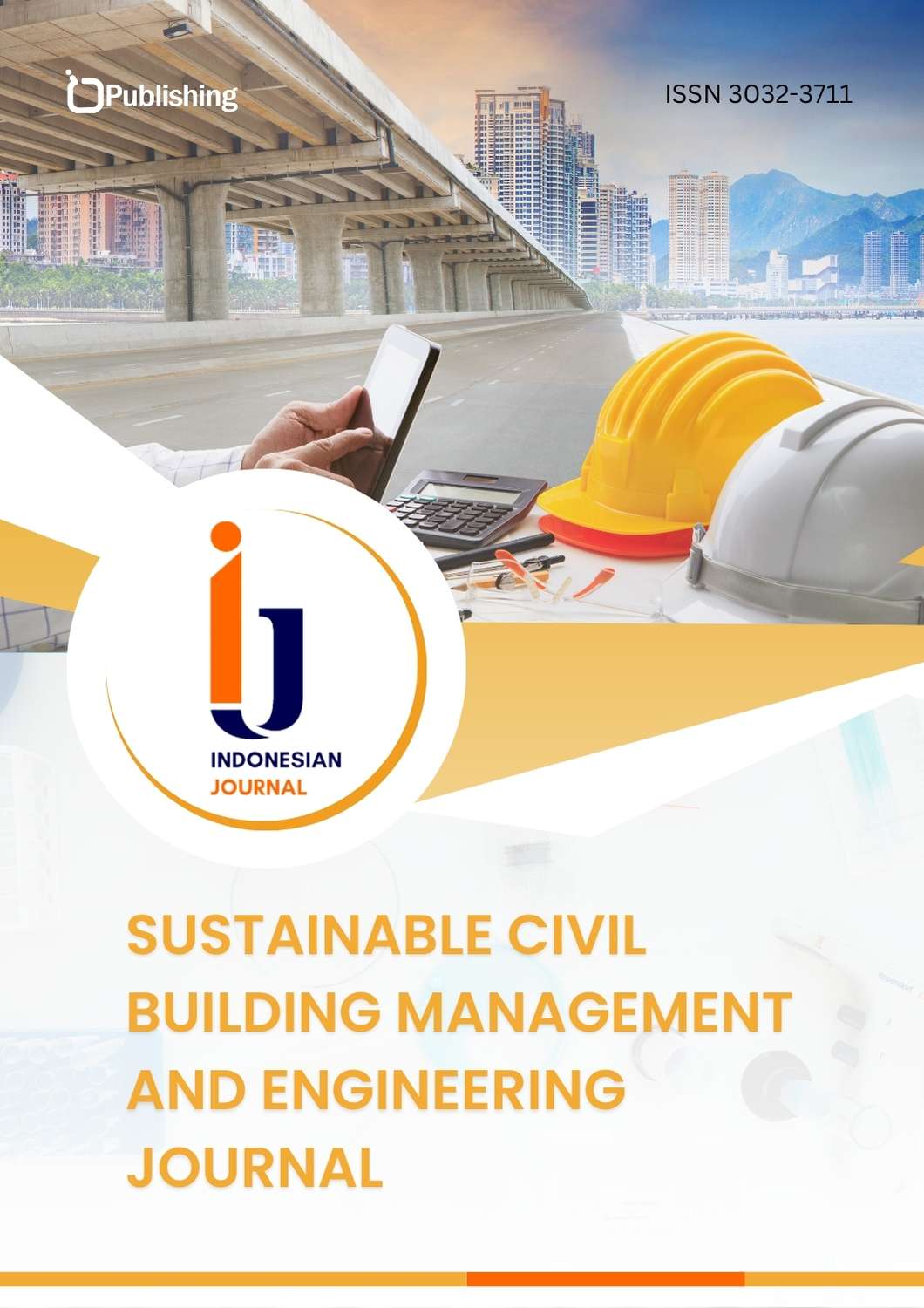Research and Work Done on the Rehabilitation of Urban Ecosystems Under Climate Change Conditions
DOI:
https://doi.org/10.47134/scbmej.v2i3.4291Keywords:
Climatechange, urbanecosystems, rehabilitation, sustainability, biodiversity, ecosystem servicesAbstract
This study aims to analyze the implementation and outcomes of urban ecosystem rehabilitation in the context of climate change, focusing on global strategies, technological innovations, and lessons applicable to Central Asian urban environments. The research employed a qualitative approach using a comparative analysis of existing green infrastructure projects across diverse climatic and socio-economic contexts. Data were gathered from scientific publications, official reports, and project evaluations, with parameters such as ecological impact, economic viability, public participation, and adaptability being assessed. The findings reveal that green roofs, vertical gardens, and sustainable drainage systems significantly contribute to energy efficiency, air purification, flood mitigation, and biodiversity enhancement. Additionally, urban forests play a vital role in carbon sequestration and psychological well-being. However, gaps persist in financing, inter-sectoral integration, and local adaptation, especially in developing countries. The study emphasizes the importance of multidisciplinary collaboration, public engagement, and long-term monitoring to ensure successful ecosystem rehabilitation. This research contributes to the development of resilient and sustainable urban planning models in the face of climate uncertainty.
References
Abdugʻaniyev A.A. (2019). Adapting Urban Water Management to Climate Change. Water Resources and Environment, 5(3), 112-119.
Andersson L. (2016). Urban Green Spaces and Public Participation in Sweden. Journal of Urban Ecology, 2(1), 1-12.
Butler K. (2017). Sustainable Urban Drainage Systems (SuDS) in the UK: Policy and Practice. Water Management Journal, 170(WM3), 121-129.
Chen, W. Y., & Nakama, Y. (2022). Evaluating green infrastructure impacts on urban heat island reduction: A review. Environmental Research, 210, 112890.
Depietri, Y., & McPhearson, T. (2021). Urban ecosystem services for resilience planning and climate adaptation. Current Opinion in Environmental Sustainability, 50, 85–92. https://doi.org/10.1016/j.cosust.2021.03.007 DOI: https://doi.org/10.1016/j.cosust.2021.03.007
European Environment Agency. (2021). Nature-based solutions for climate change adaptation in urban areas. EEA Report No 17/2021. Copenhagen: European Environment Agency.
Frantzeskaki, N., & Salat, H. (2021). Advancing urban sustainability: new opportunities and challenges for integrated nature-based solutions. Sustainable Cities and Society, 70, 102925.
Hwang, Y. H., & Kim, H. (2021). Assessing urban forest strategies for climate resilience. Urban Forestry & Urban Greening, 58, 126970. DOI: https://doi.org/10.1016/j.ufug.2020.126970
IPCC, 2021: Climate Change 2021: The Physical Science Basis. Contribution of Working Group I to the Sixth Assessment Report of the Intergovernmental Panel on Climate Change [Masson-Delmotte, V., P. Zhai, A. Pirani, S.L. Connors, C. Péan, S. Berger, N. Caud, Y. Chen, L. Goldfarb, M.I. Gomis, M. Huang, K. Leitzell, E. Lonnoy, J.B.R. Matthews, T.K. Maycock, T. Waterfield, O. Yelekçi, R. Yu and B. Zhou (eds.)]. Cambridge University Press, Cambridge, United Kingdom and New York, NY, USA, 2391 pp.
Jato-Espino, D., & Santibanez-Gonzalez, E. D. (2023). The role of public participation in climate-resilient city design. Cities, 134, 104095.
Jiang, Y., Zevenbergen, C., & Ma, Y. (2020). Urban flooding and climate change: Strategies for resilience. Sustainability, 12(3), 1272.
Kabisch, N., Korn, H., Stadler, J., & Bonn, A. (2020). Nature-Based Solutions to Climate Change Adaptation in Urban Areas. Springer. https://doi.org/10.1007/978-3-030-41703-4
MacKinnon, K., & Sobrevila, C. (2022). Investing in nature for urban resilience. World Bank Working Paper Series.
Mirsaliyev M.T. (2018). Ways to Reduce the Heat Island Effect in Tashkent City. Geography and Natural Resources Journal, 4(2), 78-85.
Morelli, F., Tryjanowski, P., & Benedetti, Y. (2020). Green infrastructure and urban biodiversity. Ecological Indicators, 118, 106724.
Nosirov O.N. (2020). Pressing Issues of Biodiversity Conservation in Uzbek Cities. Ecology News, 2(1), 30-37.
Nowak D.J. (2014). Urban forests and ecosystem services: Research and tools. Journal of Forestry, 112(1), 2-9.
Pauleit, S., & Haase, D. (2020). Governance for nature-based solutions in cities. Environmental Science & Policy, 112, 395–403.
Pulighe, G., & Fava, F. (2021). Green-blue infrastructure for flood risk reduction: A review of effectiveness. Journal of Cleaner Production, 321, 128997.
Raymond, C. M., et al. (2021). A framework for assessing and implementing nature-based solutions in urban areas. One Earth, 4(4), 462–476.
Roehr, D., & Laurenz, L. (2022). Designing urban water resilience with nature-based solutions. Water, 14(3), 458.
Seto, K. C., S. Dhakal, A. Bigio, D. Blanco, G. Delgado, D. J. F. Lafortune, I. B. N. N. R. I. P. A. N. D. R. N. (2014). Human settlements, infrastructure and spatial planning. In Climate Change 2014: Mitigation. Contribution of Working Group III to the Fifth Assessment Report of the Intergovernmental Panel on Climate Change. Cambridge University Press, Cambridge, UK and New York, NY, USA, pp. 923-1002. DOI: https://doi.org/10.1017/CBO9781107415416.018
Tan, P. Y., & Wang, J. (2023). Integration of ecosystem services in urban planning: Barriers and bridges. Journal of Environmental Management, 326, 116681.
United Nations Human Settlements Programme (UN-Habitat). (2016). Climate Change and Cities: A Compendium of Best Practices on Urban Climate Action. Nairobi: UN-Habitat.
Van der Jagt, A. P., et al. (2020). Integrating citizen science in urban green planning: Evidence and practice. Urban Planning, 5(4), 108–121.
Wong T.H.F. (2019). Blue-Green Infrastructure for Sustainable Urban Water Management. Ecological Engineering, 140, 106-115.
Zakhidov A.A. (2015). The Importance of Greening in Improving the Ecological Situation in the City. Uzbekistan Ecology Journal, 3(1), 45-52.
Zandbergen R. (2018). Green Roofs and Energy Performance of Buildings in European Cities. Building and Environment, 137, 100-109.
Downloads
Published
How to Cite
Issue
Section
License
Copyright (c) 2025 Shakarova Laylo Odilovna

This work is licensed under a Creative Commons Attribution 4.0 International License.










